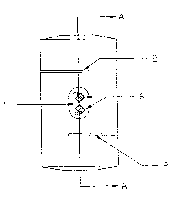Some of the information on this Web page has been provided by external sources. The Government of Canada is not responsible for the accuracy, reliability or currency of the information supplied by external sources. Users wishing to rely upon this information should consult directly with the source of the information. Content provided by external sources is not subject to official languages, privacy and accessibility requirements.
Any discrepancies in the text and image of the Claims and Abstract are due to differing posting times. Text of the Claims and Abstract are posted:
| (12) Patent Application: | (11) CA 2019143 |
|---|---|
| (54) English Title: | COMPRESSION LOAD CELL FOR FARM FEED MIXER SCALE |
| (54) French Title: | DYNAMOMETRE DE COMPRESSION POUR LES BALANCES MELANGEUSES DE MOULEES AGRICOLES |
| Status: | Deemed Abandoned and Beyond the Period of Reinstatement - Pending Response to Notice of Disregarded Communication |
| (51) International Patent Classification (IPC): |
|
|---|---|
| (72) Inventors : |
|
| (73) Owners : |
|
| (71) Applicants : | |
| (74) Agent: | |
| (74) Associate agent: | |
| (45) Issued: | |
| (22) Filed Date: | 1990-06-18 |
| (41) Open to Public Inspection: | 1991-12-18 |
| Availability of licence: | N/A |
| Dedicated to the Public: | N/A |
| (25) Language of filing: | English |
| Patent Cooperation Treaty (PCT): | No |
|---|
| (30) Application Priority Data: | None |
|---|
ABSTRACT
In a load cell for incorporation into an electronic weigh scale in turnincorporated into a portable or stationary machine for mixing feed for
livestock, it is common to incorporate said electric load cells into
said feed mixer in such a way as to result in said load cells being
loaded in compression while supporting said feed mixer. Said load
cells are generally used in combination with suitable display apparatus
to provide indication of the weight of the feed in said feed mixer. In
this invention, the load cell consists of a load sensing element in the
form of a vertically-oriented cylindrical body comprising a central
sensing beam and two load introducing members immediately above and
below the sensing beam and connected to alternate ends of the sensing
beam in such a way as to allow a compressive load to be applied to said
load introducing members. The sensing beam incorporates a plurality of
electric resistance strain gages which sense shear strain in the beam
which is proportional to the applied load. Such strain gages are
connected in a bridge configuration to develop an electric signal which
is proportional to the applied load but relatively insensitive to
forces applied in any way other than compression between said load
introducing members. The electric signal may be transmitted to a
suitable electronic indicating device.
Note: Claims are shown in the official language in which they were submitted.
Note: Descriptions are shown in the official language in which they were submitted.

2024-08-01:As part of the Next Generation Patents (NGP) transition, the Canadian Patents Database (CPD) now contains a more detailed Event History, which replicates the Event Log of our new back-office solution.
Please note that "Inactive:" events refers to events no longer in use in our new back-office solution.
For a clearer understanding of the status of the application/patent presented on this page, the site Disclaimer , as well as the definitions for Patent , Event History , Maintenance Fee and Payment History should be consulted.
| Description | Date |
|---|---|
| Inactive: Inventor deleted | 2001-01-18 |
| Time Limit for Reversal Expired | 1992-12-18 |
| Application Not Reinstated by Deadline | 1992-12-18 |
| Deemed Abandoned - Failure to Respond to Maintenance Fee Notice | 1992-06-18 |
| Inactive: Adhoc Request Documented | 1992-06-18 |
| Application Published (Open to Public Inspection) | 1991-12-18 |
| Abandonment Date | Reason | Reinstatement Date |
|---|---|---|
| 1992-06-18 |
Note: Records showing the ownership history in alphabetical order.
| Current Owners on Record |
|---|
| PAUL A. MCKENNA |
| Past Owners on Record |
|---|
| None |